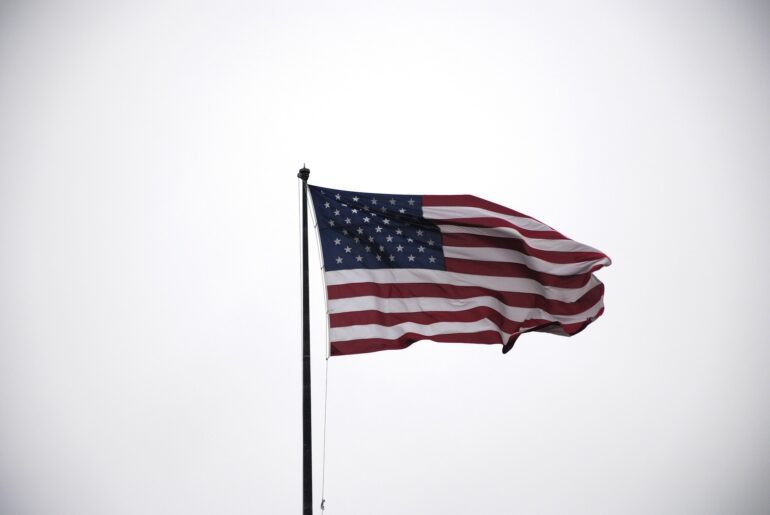TL;DR:
- US Copyright Office rejects copyright protection for works created by nature, animals, plants, or machines without human authorship.
- Recent guidelines allow for copyright protection for works containing AI-generated material that also have sufficient human authorship.
- The guidelines require human authors or artists to be named on copyright registration applications.
- AI-assisted works are evaluated for registration on a case-by-case basis.
- Copyright law requires human authorship, and non-human authorship is a barrier.
- Copyright protection applies to the human-authored aspects of works that use AI-generated material.
- Lawsuits have been filed against AI platforms that create derivative works using copyrighted images.
- The Copyright Office is investigating whether federal copyright law needs to be modified to address this issue.
- Public listening sessions planned throughout 2023 aim to provide additional insight into the use of AI in the arts and its impact on copyright law.
Main AI News:
In recent years, the US Copyright Office has faced a deluge of applications seeking copyright protection for an eclectic range of creative works, including driftwood sculpted by ocean waves, a photograph taken by a primate, an elephant mural, and the unique patterns of natural stone. However, the response has been unwavering: no. The Copyright Office’s Compendium makes it clear that works originating from nature, animals, plants, or machines devoid of creative input from a human author are ineligible for copyright protection.
Nonetheless, the Copyright Office recently issued new guidelines in light of the growing number of human-generated images modified by artificial intelligence (AI), as exemplified by Kris Kashtanova’s Zarya of the Dawn. The comic book, created by the New York-based artist and AI consultant, employs images generated by the AI platform Midjourney. While the Copyright Office granted copyright protection to the book as a whole, it refused to extend it to individual images, contending that these images lacked human authorship.
Recognizing the potential for AI-generated materials to contain enough human authorship to merit copyright protection, the Copyright Office released new guidelines in March 2023, clarifying the “human authorship requirement.” The Copyright Office affirmed that works whose traditional authorship elements were produced by machines are devoid of human authorship and, therefore, ineligible for copyright registration. However, in some cases, a work containing AI-generated material may possess sufficient human authorship to support a copyright claim.
For instance, if a human arranges or selects AI-generated material in a creative way that “constitutes an original work of authorship,” copyright protection may be granted. The Copyright Office compared some AI-generated art to traditional mechanical tools, such as a musician’s guitar pedal or a visual artist’s use of Photoshop. Ultimately, the critical factor is the extent of human creative control over the work’s expression and whether the human author “actually formed” the traditional elements of authorship.
As AI-generated art continues to proliferate, the Copyright Office’s guidelines may enable human authors to navigate this novel realm while preserving their intellectual property rights.
The emergence of artificial intelligence (AI) has complicated copyright law in recent years, raising numerous questions about how to define human authorship in works created with machine assistance. In response, the US Copyright Office has issued new guidelines designed to address these concerns, although the process remains a work in progress.
Under the new guidelines, only human authors or artists can be named on applications for copyright registration. Any AI technologies used in the creation of the work should be noted in a general statement, after which the Copyright Office will evaluate the claim on a case-by-case basis. Although the expanded guidelines do not go as far as some would like, they represent a step forward in recognizing the role of AI in creative works.
Intellectual property lawyer Van Lindberg notes that “thousands of AI-assisted works are being generated every day,” and he believes that the Copyright Office’s new guidance reflects an increasing willingness to evaluate AI-assisted works for registration. However, he also acknowledges that copyright law requires human authorship and that non-human authorship remains a barrier until this requirement is changed by Congress or the Supreme Court.
Another intellectual property lawyer, Scott Hervey, observes that the line between human and machine-generated art can be difficult to define. Nevertheless, if a human selects or arranges AI-generated material in a sufficiently creative way, the resulting work may constitute an original work of authorship. Copyright protection would then apply to the human-authored aspects of the work, independent of the AI-generated material.
A more complex copyright issue arises when AI platforms are fed existing copyrighted images, allowing users to create derivative works that may be put up for sale. Getty Images and several artists have filed lawsuits against some of these platforms for copyright infringement. Intellectual property lawyer James Lorin Silverberg notes that the Copyright Office is investigating whether federal copyright law needs to be modified to address this relationship between original copyrighted material and AI-generated images.
As AI-generated art continues to grow in popularity, the Copyright Office and legal experts must balance the need to protect intellectual property rights while adapting to new creative tools. Public listening sessions planned throughout 2023 will provide additional insight into the use of AI in the arts and its impact on copyright law.
Conlcusion:
The US Copyright Office’s new guidelines represent a step forward in recognizing the role of artificial intelligence (AI) in creative works. The guidelines provide some clarity for human authors who use AI-generated material and enable them to navigate this novel realm while preserving their intellectual property rights. However, the guidelines also reveal the ongoing complexity of defining human authorship in works created with machine assistance.
As AI-generated art continues to grow in popularity, the Copyright Office and legal experts must balance the need to protect intellectual property rights while adapting to new creative tools. This could impact the market by potentially increasing demand for AI-generated works that contain sufficient human authorship to be eligible for copyright protection.

